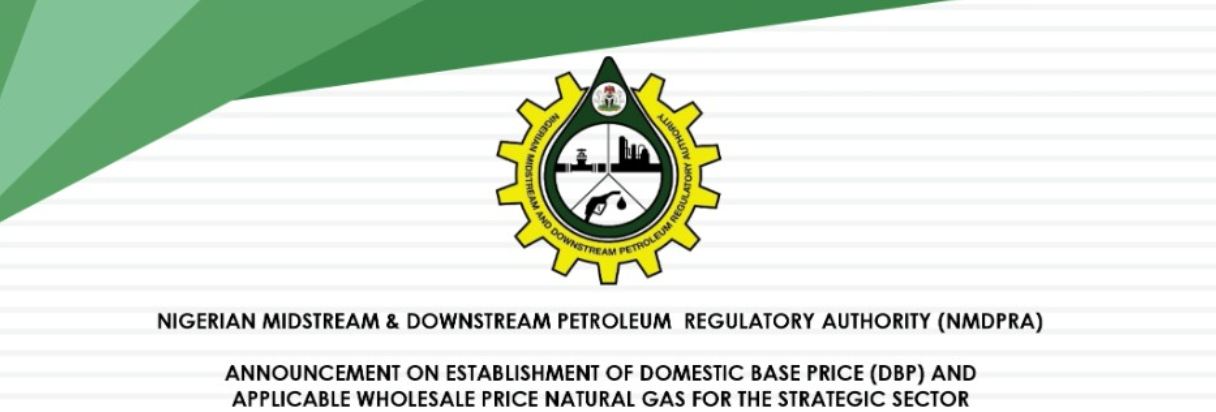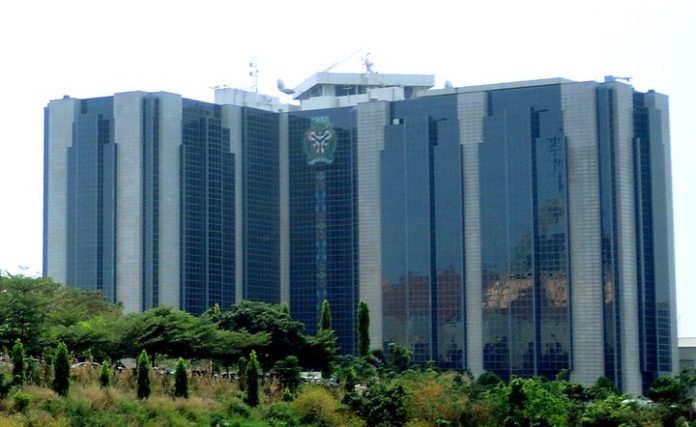As you already know, the CBN has mandated all banks to loan out 60% of their deposits to businesses. To show their seriousness, they warned that banks that fail to meet up with this lending ratio will be fined 50% of their shortfall.
most banks did not take this seriously enough, until the 30th of September, when CBN deducted a total of N499Billion from 12 banks for non-compliance.
The 12 banks are ZenithBank(135.6B), CitiBank (100B), UBA (99.7B), FirstBank (74.7B), Standard Chartered Bank (30B), GTB (25B), FCMB (14.4B), JAIZ Bank (7.5B), Keystone (4B), Rand (2.8B), FBNQuest (2.7B), SunTrust (1.7B)
To make matters worse for the banks, the CBN immediately increased the lending ratio to 65%, so right now, either the banks loan out the money or they will lose half of it for nothing!
With this,several things are already happening that will definitely have a huge impact on the economy in the coming months and years.
Banks are forced to actively start looking for good projects and businesses to loan out money to. They are now spending the same energy they use in recruiting new customers in also looking for viable businesses to invest. This is because the more deposit they have, the more money they have to loan out in order to meet up with CBN Loan-to-deposit (LDR) ratio.
Banks are currently restructuring their loans by increasing the loan term and decreasing the interest rate, so as to make their loan packages more attractive and also reduce the number of bad loans. They will rather receive much less than the 23% interest they are used to, instead of losing the money entirely to CBN.
Critically reviewing this CBN’s policy directive, there is a need to have little or basic knowledge of Economics 101, and what Loan to Deposit Ratio means.
The loan-to-deposit ratio (LDR) is used to assess a bank’s liquidity by comparing a bank’s total loans to its total deposits for the same period. The LDR is expressed as a percentage. If the ratio is too high, it means that the bank may not have enough liquidity to cover any unforeseen fund requirements. Conversely, if the ratio is too low, the bank may not be earning as much as it could be.
Formula and Calculation for LDR
To calculate the loan-to-deposit ratio, divide a bank’s total amount of loans by the total amount of deposits for the same period. You can find the figures on a bank’s balance sheet. Loans are listed as assets while deposits are listed as liabilities.
What Does LDR Tell You?
Example of LDR
For example…If a bank has 500 million naira in deposits and 400 million naira in loans, the bank’s LDR ratio would be calculated by dividing the total loans by its total deposits.
A loan-to-deposit ratio shows a bank’s ability to cover loan losses and withdrawals by its customers. Investors monitor the LDR of banks to make sure there is adequate liquidity to cover loans in the event of an economic downturn resulting in loan defaults.
In addition, the LDR helps to show how well a bank is attracting and retaining customers. If a bank’s deposits are increasing, new money and new clients are being on-boarded. As a result, the bank will likely have more money to lend, which should increase earnings. Although it is counterintuitive, loans are an asset for a bank since banks earn interest income from lending. Deposits, on the other hand, are liabilities because banks must pay an interest rate on those deposits, albeit at a low rate.
The LDR can help investors determine if a bank is managed properly. If the bank is not increasing its deposits or its deposits are shrinking, the bank will have less money to lend. In some cases, banks will borrow money to satisfy its loan demand in an attempt to boost interest income. However, if a bank is using debt to finance its lending operations instead of deposits, the bank will have debt servicing costs since it will need to pay interest on the debt.
As a result, a bank that borrows money to lend to its customers will typically have lower profit margins and more debt. A bank would rather use deposits to lend since the interest rates paid to depositors are far lower than the rates it would be charged for borrowing money. The LDR helps investors spot the banks that have enough deposits on hand to lend and will not need to resort to increasing their debt.
The proper LDR is a delicate balance for banks. If banks lend too much of their deposits, they might overextend themselves, particularly in an economic downturn. However, if banks lend too few of their deposits, they might have opportunity cost since their deposits would be sitting on their balance sheets earning no revenue. Banks with low LTD ratios might have lower interest income resulting in lower earnings.
In an ideal economy, Multiple factors can drive changes in the loan-to-deposit ratios. Economic conditions can affect loan demand as well as how much investors deposit. If consumers are unemployed, they are unlikely to increase their deposits. If rates are low, loan demand might increase depending on the economic conditions. In short, there are many outside factors that influence a bank’s LDR.
But in Nigeria, this explanation is beginning to form the ideal situation, because prior to now, Most Nigerian banks will prefer to lend to the oil and gas sector and big industries due to high profit and avoid low-interest rates from small business as well as living large on round-tripping with depositors funds.
In an interview with a bank branch Manager….Anuoluwa kitan Gabriel… The cost of funds determines the interest rate that is been given to SMSE and other areas of mortgage. The banks are aware of the fund but the truth still remains that most of the funds presently been used, are gotten from depositors fund gotten at short term, and when it is short term the interest rate has to reflect that fact
For this investment Analyst..,Chigoze udozie……
No bank will lend out more money and also no one will borrow from them @ 23% interest or more. There is no business you can do in Nigeria that can generate 30% margin except for government contracts. Already CBN and AMCON are trying to recover over N5 trillion of bad debt. It is safe for the banks that their accounts are debited and the money kept by CBN than lend out money that will never come back. In addition, no one in his right senses will borrow money that will not generate a return above the interest rate he pays. That policy is a none starter in the fisrt place. It neither favors the Banks nor the Bank’s customers. It only favors the CBN – since they can just debit Bank accounts and pay no interest on the money. Period.
A recent report by the Central Bank of Nigeria Revealed that the Banking sector’s credit to the private sector rose to N25.47trillion naira, which of course is a result of this new APEX bank initiative. In a bid to drive lending to the real sectors, The statistics also revealed that the banking sector’s credit to the private sector was N22.9trillion naira in January.
It increased to N24.2trillion naira in February. The figure dropped marginally to N23.99trillion naira in March and increased by 3.72 percent to N24.88trillion naira in April.
According to the CBN, the credit remained flat at N24.88trillion naira in May and dropped to N24.76trillion naira and N24.29trillion naira in June and July, respectively.
On the other hand, the banking sector’s credit to the government dropped by 1.13 percent to N11.01trillion naira in September from N11.13trillion naira in August.
This is coming on the heels of the CBN directive to banks to reduce their exposure to the Federal Government securities.
The CBN governor, Godwin Emefiele, had restricted banks on their access to government securities. Other assets (net) of the banking system rose by 0.27 percent at end-September 2019 to negative N14.79trillion naira, in contrast to the negative N14.76trilionn in August.
With this reaction, the Apex bank effort is yielding positive results at a fast pace. For this Economic Analyst…Audu ALIYU As good as the good initiative of the CBN, Still lending at 23 percent or single-digit interest rate is not good enough for businessmen, Not forgetting that the banks are giving in the short term.
In a report by Bloomberg, it has it that (CBN) has started refunding the Deposit Money Banks, part of the N500 billion imposed as an additional cash reserve for breaching the regulator’s directive on lending to the real sector of the economy.
the refund made by the CBN was confirmed by Ahmad Abdullahi, the Central Bank’s head of banking supervision.
The Details: It was learnt that the CBN has refunded some of the banks from the N500 billion naira ($1.4 billion) earlier taken as additional cash reserves. It was learnt that most of the banks recently fined by the Central Bank were refunded after meeting the 60% Loan-to-Deposit (LDR) requirement.
Confirming the development, the Chief Financial Officer of the United Bank for Africa Plc, Ugochukwu Nwaghodoh, disclosed that the Bank was refunded N99.7 billion after increased lending. (BLOOMBERG)
CBN directed banks to maintain a minimum Loan Deposit Ratio, LDR, OF 60% by September 30, 2019. The LDR was reviewed upwards from 58.5% to 60% with the banks informed to maintain the LDR till September end.
The LDR has now been increased as all DMBs are to now attain a minimum LDR OF 65% by December 31, 2019.
However, the CBN quickly clarified that the deductions were only proportionate to the levels of default and banks are not losing the money
Forcing banks to lend to customers or forfeit it is wonderful news for entrepreneurs, as they will now have more time to repay their debts and they will spend less money on servicing it.
If this policy is sustained, it has the potential to change the business landscape in Nigeria and it will have a serious positive impact on the business climate in Nigeria, especially for domestic business entrepreneurs.
In an ideal economy, Loan to Deposit Ratio should be around 80 to 90 percent.
In an ideal situation, the Loan to Deposit Ratio in a good economy as it is being practiced in the United States and other climes should be around 80 to 90 percent. However, the Central bank given at 65percent is a good way to start if all economic parameters are commensurate, the reason being that, we are not yet there in achieving huge success on financial inclusion, and as we speak, with some newly introduced charges on deposit, it might further reduce banks’ deposits, as the charges will discourage some to deposit or the banks will have to battle with an increase in dormant accounts.
While commending the Apex bank on this 65percent loan to Deposit Ratio, to encourage business to thrive and support local entrepreneurs, there is still need to intensify the drive for financial inclusion at all levels so that banks can have enough to lend, while the Central Bank can reduce extending olive hands or branch to prodigal banks that are not prudent, if the banks are further sanctioned to be more prudent.
And the only way out is to relax some policies that will not milk the lean cow more at the extent of the fat ones, as the government and Banks need to create or invent some policies that will encourage savings rather than discourage.
Ayoade Olatokewa wrote from Abuja









































